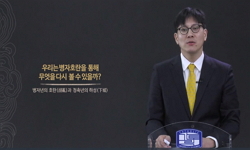The purpose of this study is to make clear the identity of two countries traditional residence more objectively by making a comparative review of traditional houses among Korea and China which are neighboring geographically and whose cultural environm...
http://chineseinput.net/에서 pinyin(병음)방식으로 중국어를 변환할 수 있습니다.
변환된 중국어를 복사하여 사용하시면 됩니다.
- 中文 을 입력하시려면 zhongwen을 입력하시고 space를누르시면됩니다.
- 北京 을 입력하시려면 beijing을 입력하시고 space를 누르시면 됩니다.
朝鮮時代 上流住宅과 明淸時代 四合院의 住居空間特性에 關한 比較硏究 : 鄭蘊家屋과 北京四合院을 중심으로 = (A) Study on Comparison of the Spatial Characteristics of Upper Class Houses in Joseon Dynasty and Sahapwon in Myeongcheong Dynasty
한글로보기https://www.riss.kr/link?id=T9360179
- 저자
-
발행사항
전주 : 全北大學校 大學院, 2004
-
학위논문사항
학위논문(석사)-- 전북대학교 대학원: 조경학과 2004. 2
-
발행연도
2004
-
작성언어
한국어
- 주제어
-
KDC
610.911 판사항(4)
-
발행국(도시)
전북특별자치도
-
형태사항
vii, 69p. : 삽도 ; 27cm
-
일반주기명
참고문헌: p. 67-69
-
소장기관
-
0
상세조회 -
0
다운로드
부가정보
다국어 초록 (Multilingual Abstract)
The purpose of this study is to make clear the identity of two countries traditional residence more objectively by making a comparative review of traditional houses among Korea and China which are neighboring geographically and whose cultural environments are similar historically. These confirmed result and discussed items are as following.
1. Upper Class Houses in Joseon Dynasty is interested to meaning that space retains than form of space. Therefore, it is accomplishing area division by man and woman's distinction of sex thoroughly by Taegeuk(태극) and Yinyang(음양) thoughts in area division of house space.
Sahapwon(사합원) in Myeongcheong(明淸) Dynasty is accomplishing area division thoroughly by Jo(朝) that is public space and Chim(寢) that is personal space by function by Jeonjohuchim(前朝后寢) principle within model of exceptional space form.
2. Religious service competence of Upper Class Houses in Joseon Dynasty is inherited by eldest son preferential treatment imparity inheritance system individually. Therefore, the importance of religious service area is emphasized from house space, and religious service space got divided by singleness area that dominate big area into backhouse.
Religious service competence of Sahapwon(사합원) in Myeongcheong(明淸) Dynasty is divided by dividing equally inheritance system. Therefore, a religious service about a ancestor could be gone at the same time in several places and settled center space of Jiongbang(正房) to exceptional space that pass religious service to ancestor in all house spaces by family division.
3. Upper Class Houses in Joseon Dynasty accomplishes partition of building by Salangchae(사랑채) and Anchae(안채) that house space does domestic acceder parents and eldest son conjugal space to basis to do immediate family by idealization, and partition of the room to life space between generation by Jangyuyuseo(장유유서) in unit building.
Sahapwon(사합원) in Myeongcheong(明淸) Dynasty accomplishes partition of building of couple unit for each family's independence guarantee to do extension family system by idealization, and divided buildings do space arrangement by grade of rank by Jangyuyuseo(장유유서).
4. Function and role of Salangchae(사랑채) and Anchae(안채) space of Upper Class Houses in Joseon Dynasty are result of expression of sociality that is Mutually role division of labor and Balance of power between Joseonjo(조선조) head of a family and lady of the house, Salangchae(사랑채) space used to authority space for head of a family's reception of a guest and lodging and boarang and Anchae(안채) space used to authority space of lady of the house for living.
Function and role of Cheongbang(청방) space and Jiongbang(정방) space of Sahapwon(사합원) in Myeongcheong(명청) Dynasty are result of reason system that can effect family's all orders through head of a family and prosperity by Chinese's absolute man of power's universe center theory, Cheongbang(청방) space used to authority space for head of a family's reception of a guest and Jiongbang(정방) space used to authority space for head of a family's everyday life.
5. Upper Class Houses in Joseon Dynasty wished to recognized house space by some of nature and try fusion with drastic nature and live to submission to reason of nature.
Sahapwon(사합원) in Myeongcheong(명청) Dynasty regarded as the best value that introduce artificial nature through exceptional Garden space within house and lives with nature.
목차 (Table of Contents)
- 목차 = ⅰ
- 표목차 = ⅲ
- 도면목차 = ⅳ
- SUMMARY = ⅴ
- Ⅰ. 서론 = 1
- 목차 = ⅰ
- 표목차 = ⅲ
- 도면목차 = ⅳ
- SUMMARY = ⅴ
- Ⅰ. 서론 = 1
- 1. 연구의 목적 및 의의 = 1
- 2. 연구의 범위 및 방법 = 3
- 1). 연구방법 = 3
- 2). 연구의 범위 = 4
- (1). 시대적 범위 = 4
- (2). 대상적 범위 = 4
- (3). 내용적 범위 = 5
- 3. 연구사 = 6
- Ⅱ. 연구대상의 일반적 사항 = 8
- 1. 定住環境 = 8
- 1). 주거환경 = 8
- 2). 정치 및 사회신분제도 = 10
- 3). 가족제도 = 12
- 4). 종교 = 15
- 2. 각 연구대상의 일반적 사항 = 17
- 1). 조선시대 상류주택의 공간구성요소 = 17
- 2). 明淸時代 북경사합원의 공간구성요소 = 19
- Ⅲ. 연구대상의 주거공간분석 = 23
- 1. 주공간의 영역분할 = 23
- 1). 조선시대 상류주택 = 23
- 2). 明淸時代 북경사합원 = 27
- 3). 소결 = 30
- 2. 가족제도에 따른 건물구성 및 배치 = 33
- 1). 조선시대 상류주택 = 33
- 2). 明淸시대 북경사합원 = 38
- 3). 소결 = 42
- 3. 중정의 기능 및 역할 = 44
- 1). 조선시대 상류주택 = 44
- 2). 明淸時代 북경사합원 = 48
- 3). 소결 = 52
- 4. 주거공간과 자연의 조화 = 54
- 1). 조선시대 상류주택 = 54
- 2). 明淸時代 북경사합원 = 57
- 3). 소결 = 62
- Ⅳ. 결론 = 64
- 참고문헌 = 67











